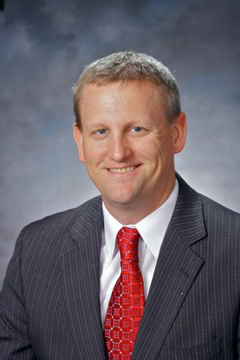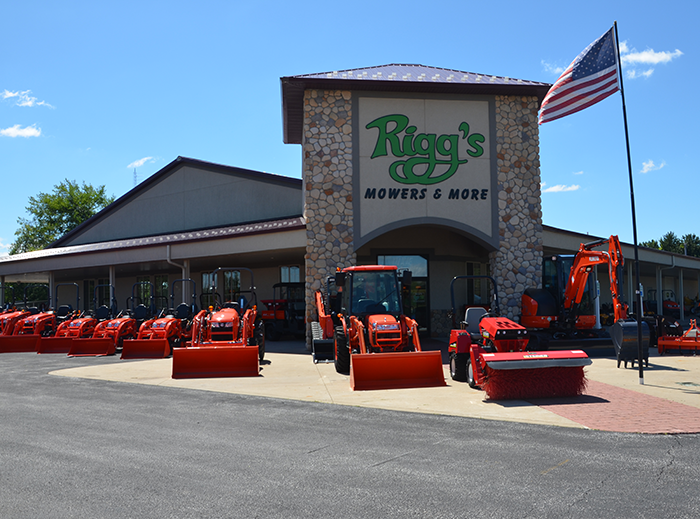Geoff Blanco joined Rigg’s Outdoor Power Equipment in 2003 and shortly after became a part owner, with a 49% share. He completed the acquisition of the dealership last March and recently shared a first-hand account of the process that appeared in Parts 1 and 2 of a three-part series. In Part 3, Mikal Christopherson, vice president at TCF Commercial Banking, who helped finance the acquisition, shares a lender’s view of a successful acquisition.
Rigg’s Outdoor Power Equipment has locations in Valparaiso, Mishawaka, LaPorte and Lafayette, Ind., and carries Kubota, Hustler, Cub Cadet, Stihl, Land Pride, Western, Honda and Toro consumer equipment. The dealership was featured in our 2014 “Season-to-Season” series and Blanco serves on Rural Lifestyle Dealer’s editorial advisory board.
RLD: Can you provide some background into how TCF Commercial Banking works with equipment dealers?
Mikal Christopherson: TCF Bank does business with about 30,000 dealers across the country, mostly through inventory or equipment financing. A few years ago, we wanted to find ways to enhance how we serve dealers, such as by offering lines of credit, mortgage financing, banking accounts and other offerings.
As part of that initiative, the bank started the Customer First Alliance, which is a group of experts, including attorneys, insurance company representatives, investment bankers and others. These experts consult with dealers on a wide range of business issues, such as improving efficiencies and business processes, making sure their businesses are fully insured, retirement planning and more. Basically, the Alliance help strengthen dealers, which, in turn, strengthens the manufacturer/dealer relationship.
Rigg’s Outdoor Power Equipment is an inventory financing customer of TCF and through the Alliance, we also supported Geoff in his purchase of the dealership.
As a lender, what criteria do you use to initially qualify a dealer who is seeking financing support?
Christopherson: Number one: We want to do business with people who have earned respect in the industry, who show high integrity and demonstrate that they know what they are doing.
Number two: We know that the equipment industry is cyclical, so we look to see if a dealership is consistently profitable, regardless of the cycle. For instance, if sales are declining, it doesn’t mean that the dealership has to lose a lot of money. Are they able to watch expenses and adjust to the new reality of that year?
You're reading Part #3 of the Path to Acquisition article series.
Jump to Part #1 | Jump to Part #2
Part #1: How a Partner Became an Owner
Geoff Blanco provides a first-hand account of his acquisition of Rigg’s Outdoor Power Equipment after being a partner for 12 years.
Part #2: How a Partner Became an Owner
In Part #2, Geoff Blanco shares more details about the challenges he faced in acquiring full ownership of Rigg’s Outdoor Power Equipment after being a partner for 12 years.
Number three: In addition to people and profitability, we look at the philosophy of the business. Do they have a strategy or philosophy that makes sense and that says “This is how I’m going to be successful in the market.” For instance, are they different from their competitors?
We look for people who just don’t open the door and wait for customers to walk in.
What kinds of things would make you cautious about working with a dealer?
Christopherson: We’ve found that many smaller dealerships have accounting procedures that are not “professionalized.” In general, many struggle with paying an accountant to report the news they already know. However, we rely on good financial statements to show us how the dealership is doing, what their issues are and what their successes are.
As a dealer grows and becomes more successful, the level of professional advice and services they get from accountants, attorneys and insurance agents should increase as well. This level of support gives confidence to bankers and investors. That’s the point of the Customer First Alliance: To help businesses add a layer of expertise.
In evaluating a dealership, we’re also looking for things like whether their inventory is relevant to the market — that it’s not been sitting on the lot for too long. We evaluate whether the owner has pride in the appearance of the dealership. Are the buildings looking aged? Does it look like a retail business and is neat and presentable?
Besides getting their financials in order with the help of a professional, what else can dealers do to be considered a good investment?

Mikal Christopherson, vice president at TCF Commercial Banking, helped finance the acquisition.
Christopherson: Make sure you understand anything that looks negative in your financial statements and have a plan for how you’re going to fix it. When you do that, you demonstrate an understanding of your business and show you are keeping things moving in the right direction.
Don’t try to ignore or bury issues. Be proactive in bringing them up. That goes over much better than when the banker finds something negative and brings it up. It’s always better to be the first one to talk about it. No one is looking for perfect businesses, but we are looking for businesses that can get through the tough times.
Can you share some comments about working with Geoff Blanco through the acquisition of Rigg’s Outdoor Power Equipment?
Christopherson: Geoff and Rigg’s demonstrated the principles of “people, profitability and philosophy.” Geoff had been in the business for 10-plus years. He came in and learned the business and as he learned the business, he developed ideas of his own. Throughout his more than 10 years with the dealership, you could see how his philosophies had a real-world impact on the business. Rigg’s is operating at levels that are substantially higher than before he joined the business. In the last few years, in particular, the dealership has had tremendous success.
Geoff shared about the challenges of running a dealership and working the complicated steps of an acquisition. Can you share some advice on how dealers can best manage the process?
Christopherson: Dealers often are able to control many things at their dealerships, but in an acquisition, there are so many things outside of their control that are influencing the process between the lender and the borrower.
In large corporations, there might be teams of attorneys managing the acquisition, but most dealers can’t afford to hire a team. You have to gather a lot of financing information and fill out a lot of forms. Depending on who is involved, you may have to fill out different versions of similar forms. It can get overwhelming, even from our perspective. For instance, the SBA asks for each page of financial statements to be initialed. You could sit and argue about why you have to do that or sit and initial the pages and move on. You have to keep in mind that the SBA provides low-rate financing at nice terms, providing money to businesses that may find it difficult to get financing elsewhere.
There’s no avoiding the fact that it’s a difficult process. Keep in mind that there’s a goal at the end and you have to make a lot of people happy on the way.
What should dealers keep in mind as they search for a financing partner?
Christopherson: It’s important to find a lender that demonstrates some knowledge of the equipment industry. For instance, most lenders want to deal with a business that has assets. Dealers might own the property, but that has a mortgage. They might have some receivables, but probably not a high level. For a traditional bank that hasn’t worked with dealerships before, that’s not a lot of assets.
So, look for a lender that helps you find a solution, without causing delays and insecurity in the approval process because they don’t understand your business.
Can you comment on what dealers should be aware of regarding what might be ahead for financing?
Christopherson: What’s on everybody’s mind now is interest rates. The Federal Reserve has increased short-term interest rates and seems to want to continue increasing those rates. Long-term interest rates and fixed rates are rising somewhat, but there is a feeling that they might hold steady. Watch the difference between short-term and long-term rates.
Make sure you understand your dealership’s debt load and whether you can handle an increase in interest rates. If interest rates increase 2-3%, will you still be able to pay your bills? Dealers need to be able to withstand those increases.
What trends do you see regarding dealership acquisitions?
Christopherson: We were very excited to support the Rigg’s acquisition and we believe there is a trend for more acquisitions in the equipment industry. We see what others are seeing — many owners are at retirement age or will be soon and we see a wave of acquisitions in the next 10-20 years.
Whether a dealer sells to a family member, a competitor or closes the doors, the sooner they start succession planning, the sooner they can prepare their business and clean up any issues. They have more options when they are strategic about converting their assets and paving the way for the next generation of owners. Then, when people like me walk in the door and start asking questions, they’ll be ready.
At the end of the day, it’s in everyone’s interest to have strong dealers and a strong dealer network. It strengthens the manufacturers and strengthens markets.






Post a comment
Report Abusive Comment